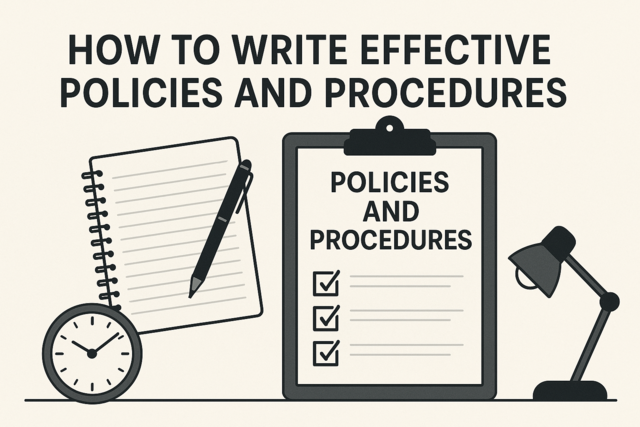Traditional business components, such as strategy and organizational structure, have a place in the business' organizational behavior. These are all key components of a business' function and identity, so it's not much of a stretch to consider how they are all connected to each other. This article will explore the roles that strategy and structure play in both business and organizational behavior.
Strategy and structure are two separate concepts in business that affect multiple aspects. Strategy serves as a plan of action for the business, determining what the business is going to do next, how they're going to do it, and when. It predates the business' structure, since the creation of an organizational structure requires planning for its execution.1 The entire layout of the business down to the last detail needs to be carefully planned in order for it to be a cohesive structure that works. This includes the organizational behavior that will be present in the business amongst the staff. Strategy also impacts organizational behavior through changes: improvements to any of its components, adjustments to expansion and company growth, and tactics to maintain it, to name a few.
In terms of structure, it lays the foundation that a business' organizational behavior is based upon. Structure dictates how the business will be divided, its staff size-both in regards to the business as a whole and in individual departments and groups-the details of leadership positions, budget restrictions, policies, and so on.2 Nearly everything that determines the details of organizational behavior's components is decided upon in the business' structure. Improvements to organizational behavior typically affect the structure, as things like policies tend to need modification. Often, issues within the structure as the business grows and expands will impact the organizational behavior of the business in a negative light. Changes, good or bad, in either will be reflected in the other to some degree.
Why is Strategy Important?
As mentioned, strategy is one of the first things that a business does when they first get started. It's the planning stage that can be repeated throughout a business' lifespan as it grows and focuses on the vision business owners have. Strategy is a critical component to the success of a business, as it helps dictate where the company is headed. Businesses that frequently use strategy management in their daily operations regularly reap the benefits of having things laid out in advance. It's hard work, but so very worth it.
To give you a better idea of the importance of strategy, here are a few of the things that its inclusion can offer:
- Planning Ahead-Most businesses use strategy tactics to plan for the future. In addition to a business plan-which covers the operational and structural details of the business-most companies will put together a strategic plan. The strategic plan details the goals and objectives the business wants to meet, usually within the next few years.3 Both documents act as guides for what they business expects to accomplish and how in each of its departments. These goals can involve anything from physical growth to marketing and customer retention. They are updated as things change, or once the plan(s) have reached their expiration date, to allow for a continued strategy to be in place. More than anything else, it helps the business stay on track and gives them a fallback for when things go awry.
- Establishing Strengths and Weaknesses-Strategizing gives a business a chance to analyze its strengths and weaknesses so it can improve.4 While a business often knows itself well enough to know what it is capable of, there may be areas that need more attention than management realized. Regular strategic analysis can even track growth over time and allow the business to be continually aware of its strengths and weaknesses. That awareness gives the business a chance to direct its focus appropriately and handle problems before they get out of hand.
- Reduce Waste-Without some idea of what to you may encounter during a task or situation, it is possible that you may over- or undercompensate in your planning. When you pack for a trip, for example, you make sure that you have enough toiletries and clothing. If you miscalculate, you end up with an overflowing suitcase or a day's change of clothes short. In a business setting, poor planning can lead to issues in productivity and a waste of resources. When it happens consistently, things can get costly. Strategy can largely help reduce waste by informing a business of what they will need and how much of it.
- Customer Retention-A business is nothing without its clients. A lot of businesses will focus on how to gain more customers, but they also need to look at how they can retain the ones they already have. Strategy lets them look at what they are doing and how the customer base is reacting to it. What attracted them in the first place? Why are they not sticking around? What's bringing back the ones who are returning? The answers to questions like these can be attained through the use of strategy to look at the business' practices and sales. Such information can then be adapted for usage in a plan of action.
Types of Organizational Structure in Business
Structure's key role in business and organizational behavior means that it needs to be taken very seriously by business owners and leaders. Mistakes in a business' organizational structure can impact its functionality and set it up for failure from the start. Omitting crucial parts or including elements that are unnecessary can put a strain on things like resources as the business attempts to make up for the damage.
Setting up a business structure requires choosing a structure type and using it as a framework. The primary function will dictate the division and flow of power within the business, so that tends to be the first thing that needs to be decided upon. Information such as the business' size and industry will also need to be taken into consideration, as some structure types will work better than others based on those components.
- Hierarchical-All businesses have some form of hierarchy built into its structure for the chain of command. Hierarchical business structures tend to be the most common and can be easily combined with other types. There needs to be a steady flow of information in a hierarchical structure, as blocks anywhere along the way can cause stagnation that impacts the business.5 It's a largely bureaucratic option and can set up a barrier between the layers of power, which may not present a lot of opportunity for collaboration. More businesses are looking for alternatives to this style, but many have chosen to put their own twist on it and make their own unique version of a hierarchy for their business. One such example is a flatarchy, which removes the levels of a hierarchy and puts positions on equal footing.
- Functional-A rather practical form, functional business structures a business into groups that have a primary focus. Think along the lines of departments that handle one part of the business operations, like sales or marketing.6 While this is a fairly standard set-up, it's a simple one that is suited best for smaller businesses. Larger companies will usually use a similar structure or a modified one that can better handle its size and workload. There's less interaction between departments due to how the rest of the business' organization is designed and the separation of work.
- Divisional-Divisional structures divide a company based on things like projects and products. This works best for companies that have subsidies or multiple brands under their control.7 A lot of major companies fall into this category and use this structure to keep things organized. An example of a divisional structure in action would be Gap, which three different stores-Gap, Banana Republic, and Old Navy-under its control. Each is its own separate entity, but is united under a single brand. Such companies would be incredibly chaotic and difficult to manage without the division in place to keep things in order.
- Matrix-A matrix structure combines features of functional and divisional structures into one. It's a hybrid of sorts and it may even include traits from hierarchies to make itself fully functional. Most of the large, international companies that operate in today's markets are set up in a matrix structure. It's a far more complex and extensive option compared to the others. There's more flexibility in a matrix structure, but it's prone to power struggles and disarray between areas of similar interest or function.
There are also legal structures that a business must choose from for tax purposes.
- Sole Proprietorship-For businesses that are made up of a single employee: the owner.8 It's a very basic set-up and it only gets complicated when more people are added to the business.
- Cooperative-Also known as Co-ops, those using the service are involved in the business' ownership and operations as a member.9
- Partnership-Partnerships are owned by several individuals. There are general partnerships-everyone owns, manages, and is liable for the company equally-and limited-some general ownership with partner(s) who act as investors.
- Corporation-Complex, expensive, and has separate owners and operators. It carries more legal liability protection but more regulations.
- Limited Liability Company (LLC)-Often considered to be a miniaturized version of a corporation mixed with a partnership.
- S Corporation-S Corporations are created only through special circumstances with the IRS. Existing corporations can be eligible for status as an S Corporation should they meet the requirements and are chosen.10
How to Develop or Improve a Business Structure
Regardless of where a business stands in its life-either in the process of being created or already a century old-it can always improve or develop a new structure. It takes some careful planning and attention if you're revamping an older structure, so proceed with caution. Brand new businesses should also be considerate as they develop their structure, as this is the framework that they will build the rest of the business on. Some things to keep in mind for either circumstance:
-
- Know the Types-Both the legal and organizational types. As a business grows, its status may significantly change and require that a new type be implemented. Choosing the wrong structural option can be like constructing a building with walls in the wrong places; it's not going to stay standing for very long unless its fixed.11 It can be a bigger issue if you choose the wrong legal structure, as that is information that needs to be submitted to the government. Organizations like the IRS might choose to take a look at your business when they notice errors or differences between its structure and its other traits. As a result, there could be penalties that you will have to pay.
- Establish The Rules-Deciding upon the basic policies and features of a business before you choose a structure can help narrow down the options. The rules set the tone of the daily operations and the business' organizational culture; if the structure doesn't match, neither will be able to work efficiently.12 Think of the basics of the business, like its size and focus, in regards to the rules to give you a better idea of its structural needs.
- Make It Adaptable-As a business grows, it's primary features need to keep up and adapt to changes. The structure of a business will be one of the things that is affected the most by expansions and changes, so this will be a necessary factor to include. Applying information gained from strategizing and preparing for the business's future can help you create a flexible structure designed to last.13 Look at what is going on in the industry your business is a part of and see what is going to be necessary for success in the coming years. Take into account things like new management, employee turnover, production demands, changes in the economy, and professional goals.
























